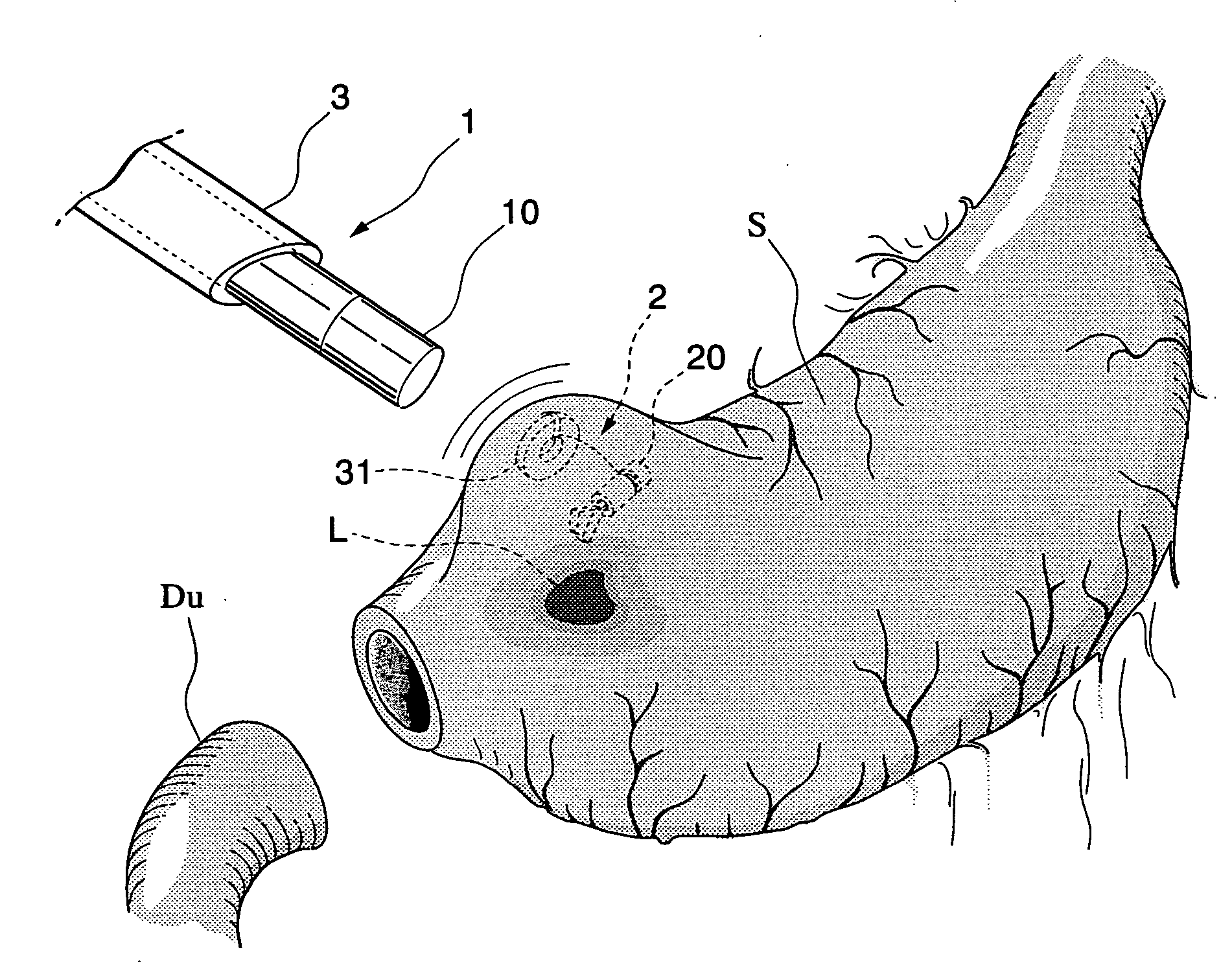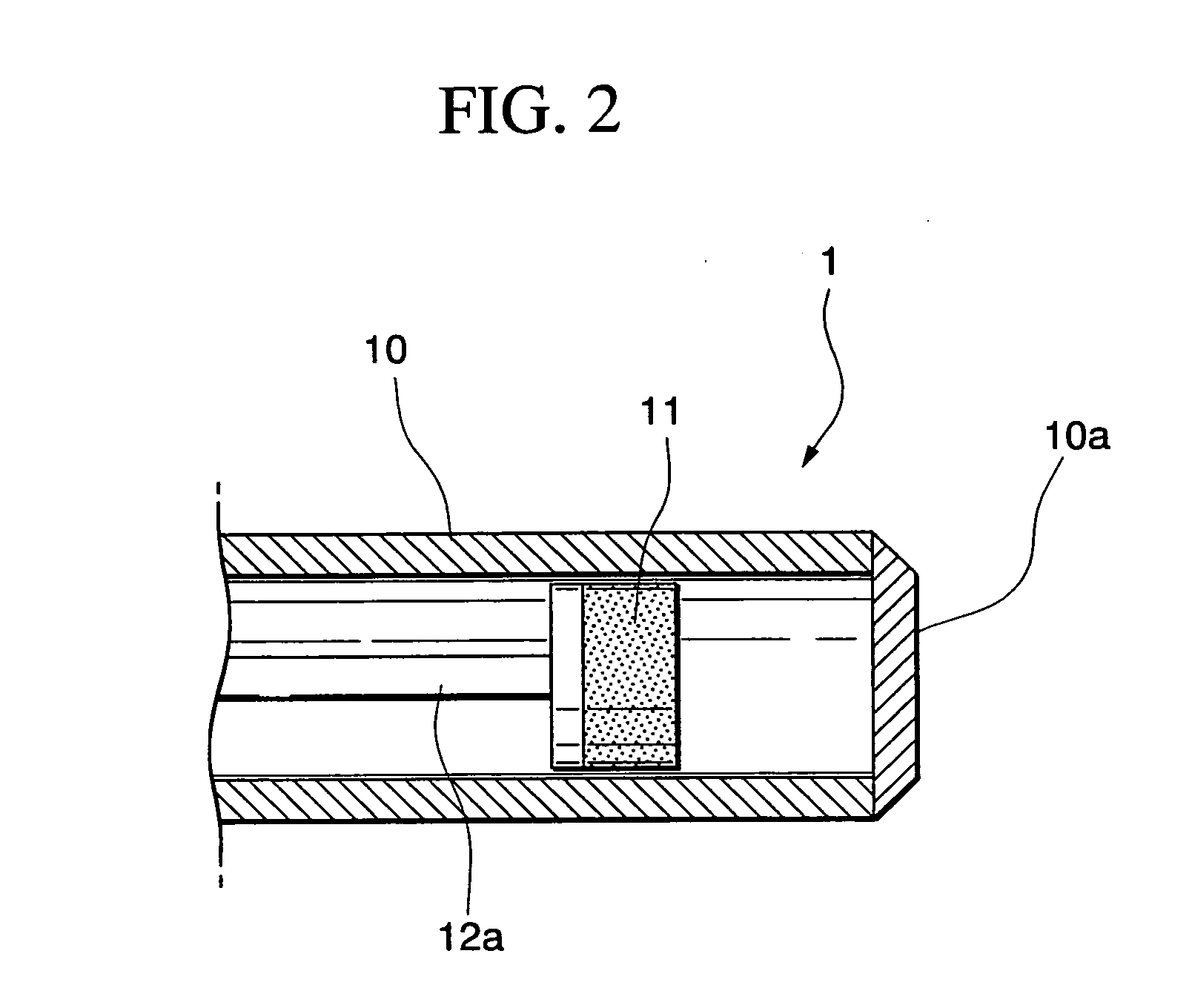Probing method and holding method for lumenal organ
a holding method and lumenal organ technology, applied in the field of holding methods for lumenal organs, can solve the problems of not being able to continue surgery, leaving all or part of the lesion behind after resection,
- Summary
- Abstract
- Description
- Claims
- Application Information
AI Technical Summary
Problems solved by technology
Method used
Image
Examples
embodiment 1
(Embodiment 1)
[0028] The surgery to partially resect the stomach under laparoscopy will be explained in this embodiment with reference to FIGS. 1 through 9.
[0029] The instruments employed in the surgery will be explained first. FIGS. 1 and 2 show a magnetic forceps 1 and an anchoring device 2, which is anchored on the inside of the stomach, that are employed in the partial resection of the stomach in this embodiment. Magnetic forceps 1 is provided with an inserted part 10 which is inserted into the abdominal cavity, a magnet 11 for attracting and adsorbing anchoring device 2, and an operating part 12 for operating magnet 11. Inserted part 10 is in the form of a rigid narrow tube, the end of which is covered by fixing in place a cover 10a.
[0030] Magnet 11 is cylindrical in shape and has an outer diameter that is slightly smaller than the inner diameter of inserted part 10. One end surface thereof forms the N pole, and the other end surface thereof forms the S pole. The magnetic lin...
embodiment 2
(Embodiment 2)
[0050] In this embodiment, the surgery for partial resection of the large intestine will be explained with reference to FIGS. 10 through 13.
[0051] First, several days to several weeks prior to the surgery, anchoring device 2 is anchored in the intestinal wall near the site where a lesion has occurred on the inside of the large intestine. Specifically, an endoscope is inserted via the anus, anchoring device 2 is introduced to the inside of the large intestine by passing it through the inserted part of the endoscope, and the intestinal wall near the lesion site is grabbed and held by clip 20. In order to prevent clip 20 from falling off, care is exercised to ensure that clip 20 firmly grabs the mucosa of the intestinal wall. Further, in order to appropriately resect the lesion during surgery, the positional relationship between the lesion site and the site where anchoring device 2 is anchored is recognized.
[0052] Next, the actual surgical sequence will be explained.
[0...
PUM
 Login to View More
Login to View More Abstract
Description
Claims
Application Information
 Login to View More
Login to View More - R&D
- Intellectual Property
- Life Sciences
- Materials
- Tech Scout
- Unparalleled Data Quality
- Higher Quality Content
- 60% Fewer Hallucinations
Browse by: Latest US Patents, China's latest patents, Technical Efficacy Thesaurus, Application Domain, Technology Topic, Popular Technical Reports.
© 2025 PatSnap. All rights reserved.Legal|Privacy policy|Modern Slavery Act Transparency Statement|Sitemap|About US| Contact US: help@patsnap.com



